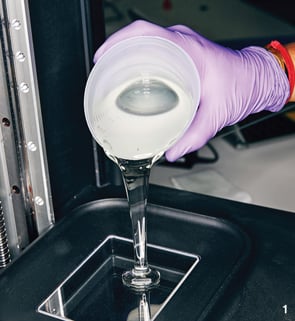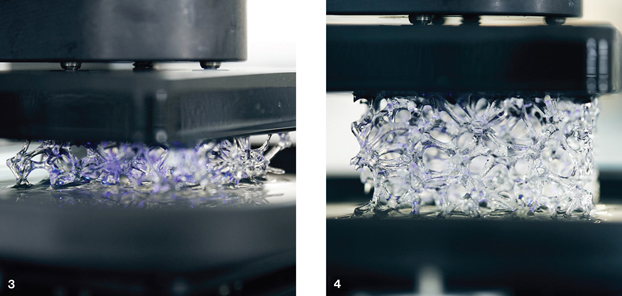| 
It is easy to understand why parents are often worried and anxious about their children’s safety. As society becomes more complicated and hectic, dangers increase as well. As a parent, you will naturally do your best to keep your child out of harm’s way. The responsibilities of a loving mother never end, and you will accept them willingly. Whether it is looking out for your child’s best interests or simply being there for support, a mother’s love is unconditional. Responsibility Of A Mother Perhaps the most important role you will have as a mother is being a provider - of a good home, proper nutrition, and physical and emotional support. It may seem like a never-ending chore, but most woman take to motherhood like second nature the minute they are declared ‘Mommy’. If you are a first-time mom and the responsibilities seem overly taxing, don’t despair. You can always form support groups with other mums to share useful tips to child-caring. Also, make sure you include your partner in taking care of the baby. After all, it is a family you built together. If anything, it should be a time you learn about yourself as well as your baby. Take it all in positive strides, even when it seems like your newborn is getting out of hand. And if all else fails, there is always good, old mom to call in case of emergencies! Discipline Your Child You’re probably tired of hearing this and are actually contemplating letting junior do whatever his friend’s mum lets her kid do. But the minute you give in is also the minute you give up on teaching your child discipline. While you do not want to be a parent who holds the reins too tightly, you do not want to be one who is overly lax with rules. The last thing you need is not having control over your child and having him or her walk all over you. Talk to them and tell them why rules are important. Tell your child why certain things are off-limits, instead of just saying ‘NO!’ with no reason. And no matter how hard it may seem, you must follow the rules you have set. If you change the rules all the time, your child will not take you seriously. Child Safety One of the most important things a mother wants to ensure is the safety of her child. A safe environment is something you must provide your child. With the flood of news these days about murders, rapes, snatch thefts, etc, it is easy to see why you are tempted to just shut the doors and keep your family inside. But this, you know, is just not realistic. So what is a mother to do? Teach your child the importance of safety and staying away from situations that could result in harm. You should teach your child how to evaluate a given situation to determine whether it is one that will result in danger. Teach your child basic safety rules - not to talk to strangers, stay away from harmful materials like fire, knives, to be alert and to always tell an adult when he or she feels scared or uneasy in certain situations. However, drilling in these rules will not help if you do not explain why it is important to adhere to them. The better you explain and reason with your children, the easier it is for them to make up their own minds and rules the next time they are faced with a potentially dangerous situation. Dealing With Teenagers One minute your five-year-old is happily singing nursery rhymes, next she is a 14-year-old prancing in short skirts and belly-baring tops. What happened to the sweet little thing who is now a sulking pre-teen who thinks everyone is out to make life miserable for her? Dealing with teenagers is one of the biggest challenges for a parent. You never know what is going through their minds, they don’t come jumping telling you everything like they did before, they start going out with people you’ve never heard of, listen to music that makes you cringe, wear clothes you don’t approve of, stay cooped up in the room most of the time and, worst of all, seem to think you are out to get them. At this stage, we don’t blame you if you think your child is really from another planet! You’ve seen how celebrities are portrayed on TV. You’ve read all about their racy lives and their partying habits. What’s worst is that these celebrities are barely out of their teens! And when your pre-teen idolizes these celebrities and tries to mimic their lifestyles without realizing the repercussions, you know you have a major headache at hand. But because celebrities and the media play a major part in today’s society, it is not something you can shield from your children’s lives. Magazines are easily attainable, TV programs run all day and the Internet is easily accessible, all this making it that much easier to be influenced by the glamorous lifestyles of the rich and famous. So how do you relate to your teenager then? Perhaps a good start would be patience. Don’t immediately slip into defensive mode when disciplining your child. Treating your teenager like he or she is still 10 is also a mistake. You must realize (and come to terms with the fact) that your child is growing up and able to make decisions. Because of this, you must start treating your child like an adult, talking and reasoning as you would with your peers. Yet even as they are growing up, teenagers still require a fair amount of guidance. Let them seek that guidance from you. Instead of being unapproachable, always tell your teenager children that you have their best interests at heart. Talk to them constantly about their friends, what’s going on in their lives. Don’t talk down to them; instead, try to see things from their point of view and try to understand what they are going through. Being a teenager is never easy - after all, you were there once, too! Mother’s Support Your child has gone from an infant to a young adulthood - yet you can’t help but still worry about him or her. After all, a mother’s love or worry does not cease as the child grows older. However, as tempted as you may be to still want to control your child’s life, stop. Your role as a protective mother should end and develop into one of support instead. Rest assure that you have taught your children enough for them to make their own decisions, and even if some decisions are wrong, they will be able to make other decisions to set things straight. If you find your children in dire need of help, but too proud to come to you, go to them instead. Stop the nagging and the blaming; instead, listen and try to offer your viewpoint so that she or he will be able to have more information to make sound decisions. Allow your children to enjoy the rest of their lives as individuals, but provide the support they need in times of difficulty. And even if you think ‘Mother knows best’, you don’t have to keep telling your children this. Eventually, they will find it out for themselves! | 



















 1. Apples
1. Apples 2. Cinnamon
2. Cinnamon 3. Citrus Fruit
3. Citrus Fruit 4. Cold-Water Fish
4. Cold-Water Fish 5. Fiber-Rich Foods
5. Fiber-Rich Foods 6. Legumes
6. Legumes 7. Green Tea
7. Green Tea 8. Nuts
8. Nuts 9. Spinach, Kale, and Collard Greens
9. Spinach, Kale, and Collard Greens 10. Chocolate
10. Chocolate 11. Steak
11. Steak 12. Vinegar
12. Vinegar







